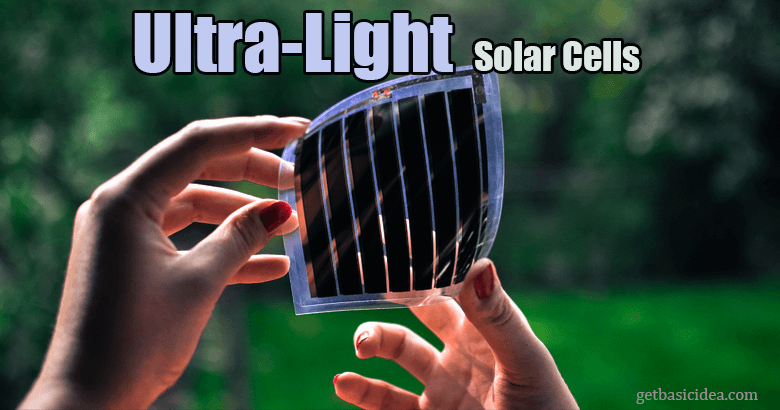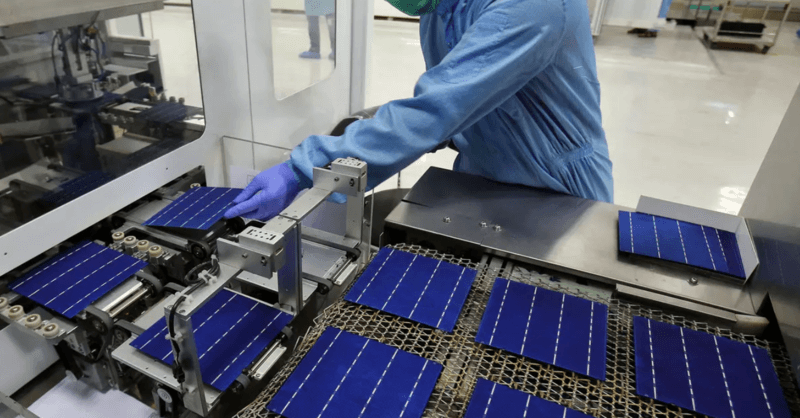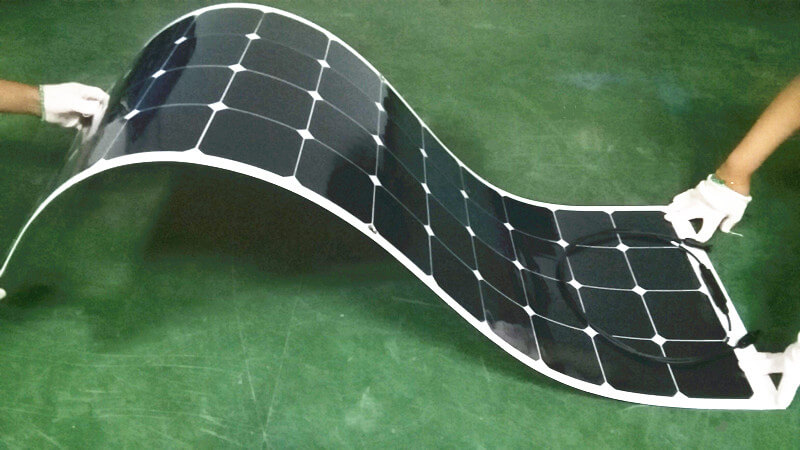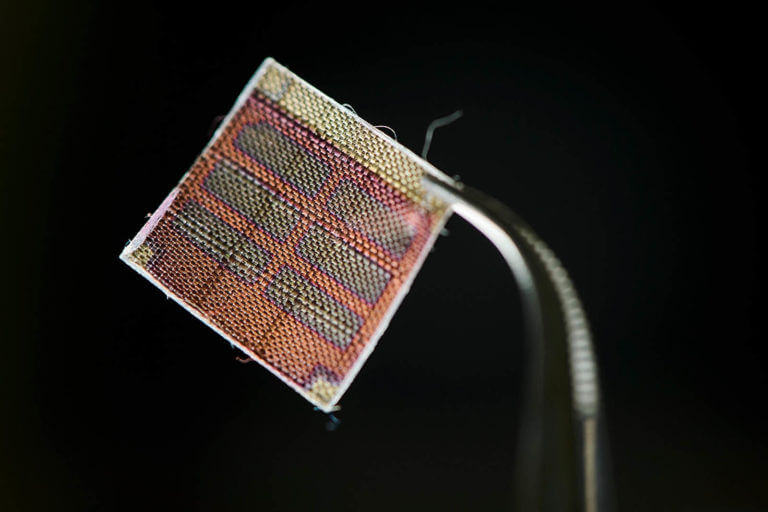Ultrathin Ultralight Fabric Solar Cells
Engineers at the Massachusetts Institute of Technology (MIT) have developed new ultralight fabric solar cells that quickly and easily turn any surface into a power source.

These incredibly thin solar cells thinner than a human hair and weighing only a fraction of what conventional solar panels do have the amazing capacity to convert almost any surface into a powerful power source. This is made practical by the use of state-of-the-art semiconducting inks and scalable printing processes. This results in an incredible 18 times higher power-per-kilogram output rate than conventional solar panels.
They can be carried and quickly deployed in remote areas for emergency support. Furthermore, they can supply energy on the go as a wearable power fabric.
The production process of Ultralight Fabric Solar Cells
These remarkable solar cells use fully printable materials and electronic inks. They use nanomaterials in the form of printable electronic inks to make the solar cells. The complex procedure entails utilizing a specialized slot-die coater to precisely deposit layers of nanomaterials onto a thin 3-micron thick substrate.

The completed solar module achieves an incredible thickness of only 15 microns by incorporating an electrode using the cutting-edge technique of screen printing. To counteract this intrinsic weakness, MIT uses a very strong fabric, Dyneema as a substrate. To hold the solar cells safely in place they use UV-curable adhesives.
They coat solar cell structures using a slot-die coater. They deposit layers of the electrical materials onto a 3-micron-thick releasable substrate. To finish the solar module, an electrode is placed on the framework using screen printing. This is a method similar to adding graphics to silkscreened T-shirts.
Result
During testing on Dyneema, the ultralight solar cells produced an astounding 370 W/kg, proving their superiority over traditional solar cells without a doubt.
Moreover, their lightweight design offers a greener substitute that drastically cuts down on solar waste. Ironically, these cells retained more than 90% of their power-generating capacity even after 500 cycles of rolling and unrolling. The MIT research group is currently investigating eco-friendly choices, such as ultrathin packaging.
According to their discovery in another test of resilience, ultralight fabric solar panels could still generate over 90% of their original power after being rolled and unrolled over 500 times.
Despite being lighter and more flexible than conventional solar cells, theirs would require an additional layer of protection from the outdoors. The organic substance made of carbon used to create the cells may change. This can happen as a result of interactions with oxygen and moisture, which can impair their functionality.
Features of Ultralight Fabric Solar Cells

Overall, the following are the main features of Ultralight Fabric Solar Cells.
| Flexibility | Ultralight fabric solar cells are typically made using flexible substrates such as textiles, polymers, or even paper. This flexibility enables them to conform to various shapes and be integrated into a wide range of applications. |
| Lightweight design | These solar cells are exceptionally lightweight, often weighing less than traditional solar panels made from glass and aluminum. This characteristic makes them ideal for applications where weight is a concern, such as aerospace, portable electronics, or wearable technology. |
| Efficiency | While fabric solar cells may not achieve the same level of efficiency as rigid silicon-based solar panels advances in materials and manufacturing processes have significantly improved their efficiency in recent years. Efficiency rates vary depending on the specific technology. but they can generally convert a notable portion of sunlight into electricity. |
| Portability and Versatility | One of the most significant advantages of ultralight fabric solar cells is their portability and versatility. They can be rolled up, folded, or easily transported, making them suitable for use in remote locations, temporary installations, or mobile devices. |
Applications

You can add fabric solar cells seamlessly into various textiles, including clothing, tents, backpacks, and canopies. This integration allows for the creation of solar-powered garments and accessories, enabling users to generate electricity while on the move.
The lightweight and flexible nature of fabric solar cells opens up a wide range of applications beyond traditional solar panels. These include wearable technology, portable chargers, solar-powered backpacks, tents for outdoor enthusiasts, solar-powered sails for boats, and even integration into architectural designs.
Many Ultralight fabric solar cells utilize thin-film solar cell technology, which involves depositing thin layers of photovoltaic materials onto flexible substrates. Thin-film solar cells offer advantages such as lightweight construction, flexibility, and potential cost savings compared to traditional crystalline silicon solar cells.
Research into improving the efficiency, durability, and manufacturing processes of ultralight fabric solar cells is ongoing. Scientists and engineers continue to explore new materials, fabrication techniques, and design strategies to enhance the performance and commercial viability of these innovative solar technologies.
Visit the previous article about Necrobotic Technology.
Author of Get Basic Idea – The Knowledge Base / Bachelor of Technology – BTech, Mechatronics, Robotics, and Automation Engineering.



